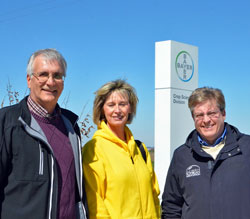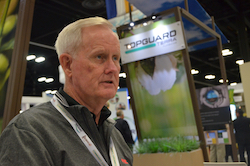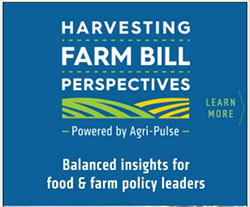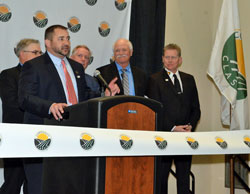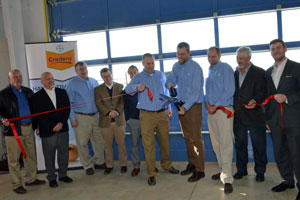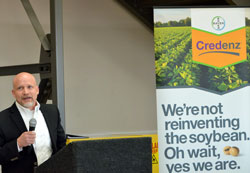 The expanded facility in Illinois is Bayer’s third grand opening of a research station in the past few days, says Marc Hoobler, Soybean Seed Product Manager.
The expanded facility in Illinois is Bayer’s third grand opening of a research station in the past few days, says Marc Hoobler, Soybean Seed Product Manager.
“This faculty will specifically focused on Midwest soybean growers, so maturity groups two and three,” Hoobler explained. “Especially for the state of Illinois, we’re going to be providing new genetics that will be coming to the market and help growers manage several things in their field from nematodes and disease to insects and different herbicide trait platforms in soybeans to help them manage their weeds. Just a lot of new innovation coming out of Bayer.”
This new innovation will center around soybeans, so for Bayer that means a focus on their flagship brand, Credenz. Credenz offers state-of-the-art technology from a herbicide standpoint, Hobbler says, and gives growers dealing with glyphosate or PPO resistance another choice in the LibertyLink trait.
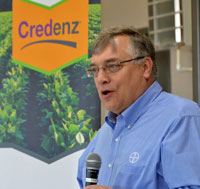 The expansion doubles the size of the facilities dedicated to understanding soybean traits and crop protection products, Brent Philbrook, Agronomic Development Director said. This new space demonstrates Bayer’s commitment to soybeans and the need to develop cultivators that cast a broader net.
The expansion doubles the size of the facilities dedicated to understanding soybean traits and crop protection products, Brent Philbrook, Agronomic Development Director said. This new space demonstrates Bayer’s commitment to soybeans and the need to develop cultivators that cast a broader net.
“Bayer has made significant commitments and put a lot of energy into expanding their trait development and particularly their soybean breeding efforts to bring Credenz varieties to the U.S. soybean growers,” Philbrook notes.
Listen to Cindy Zimmerman’s full interview with both Hoobler and Philbrook to learn more about the new research center and Credenz soybeans:[wpaudio url=”http://traffic.libsyn.com/zimmcomm/bayer-il-hoobler.mp3″ text=”Interview Marc Hoobler”] [wpaudio url=”http://traffic.libsyn.com/zimmcomm/bayer-il-brent.mp3″ text=”Interview with Brent Philbrook”]


